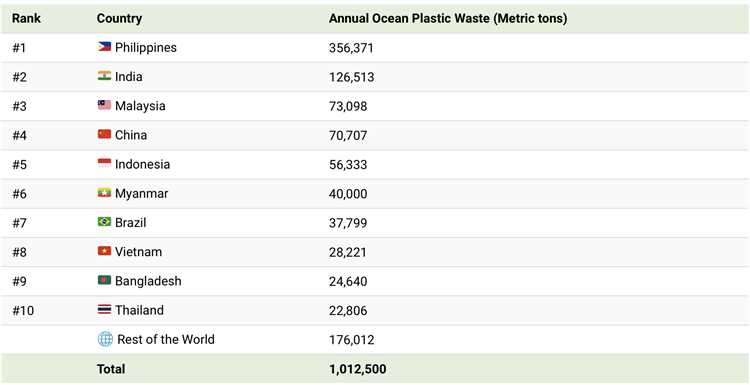
Plastic pollution has become a major environmental concern in recent decades. It is estimated that around 8 million metric tons of plastic waste enter our oceans every year, causing significant harm to marine life and ecosystems. While the issue of plastic pollution is a global problem, certain countries contribute more to this crisis than others.
One country that has gained notoriety for being the biggest plastic polluter is China. As the world’s most populous country and a major manufacturing hub, China has been responsible for a significant amount of plastic waste generation. The country’s rapid industrialization, coupled with inadequate waste management practices, has led to the release of vast amounts of plastic waste into the environment.
However, it is important to note that the plastic pollution crisis is not solely caused by one country. Other countries, such as Indonesia, the Philippines, and Vietnam, also contribute significantly to plastic pollution. These countries, with their large coastal populations and booming tourism industries, face immense challenges in managing and preventing plastic waste from entering the oceans.
Addressing plastic pollution requires global cooperation and collective efforts. It is crucial for countries to implement effective waste management strategies, promote recycling and reduction of plastic use, and invest in research and innovation for sustainable alternatives. Only through a concerted global effort can we hope to combat the plastic pollution crisis and protect our oceans for future generations.
- The Countries with the Highest Plastic Pollution
- 1. China
- 2. Indonesia
- 3. Philippines
- Global Plastic Crisis: Which Countries are to Blame?
- Leading Contributors to Plastic Pollution
- Addressing the Plastic Crisis
- Plastic Pollution Rankings: Top Offenders Worldwide
- 1. China
- 2. United States
- 3. India
- Asia’s Troubling Plastic Consumption and Disposal
- The Role of North America in the Plastic Pollution Epidemic
- The United States
- Canada
- Mexico
- Uncovering Europe’s Plastic Waste Problem
- Africa’s Growing Concern: Plastic Pollution on the Rise
- Q&A:
- Which country is the biggest plastic polluter?
- How much plastic pollution does China produce?
- Is plastic pollution a global problem?
- What are the consequences of plastic pollution?
- What measures are being taken to reduce plastic pollution?
- Which country is the biggest plastic polluter?
The Countries with the Highest Plastic Pollution
Plastic pollution is a global environmental issue that is causing significant harm to our planet’s ecosystems and marine life. While many countries are taking steps to reduce plastic waste and promote recycling, some countries still contribute a significant amount of plastic pollution. Here are the countries with the highest plastic pollution:
1. China
China is the world’s largest contributor to plastic pollution. It produces an enormous amount of plastic waste each year, much of which ends up in rivers and oceans. China has been working to address this issue by implementing stricter regulations and promoting recycling programs.
2. Indonesia
Indonesia is the second-largest contributor to plastic pollution. The country has a high population density and limited waste management infrastructure, which has resulted in large amounts of plastic waste entering rivers and oceans. Efforts are being made to improve waste management and increase awareness of the plastic pollution problem.
3. Philippines
The Philippines is another country that struggles with plastic pollution. The country’s coastal areas and waterways are heavily polluted with plastic waste, posing a threat to marine life and ecosystems. The government and various non-governmental organizations are working together to minimize plastic pollution through education and clean-up initiatives.
These are just a few examples of countries that are facing significant plastic pollution issues. Plastic pollution is a global problem that requires international cooperation and individual efforts to reduce waste and protect our planet’s environment.
Global Plastic Crisis: Which Countries are to Blame?
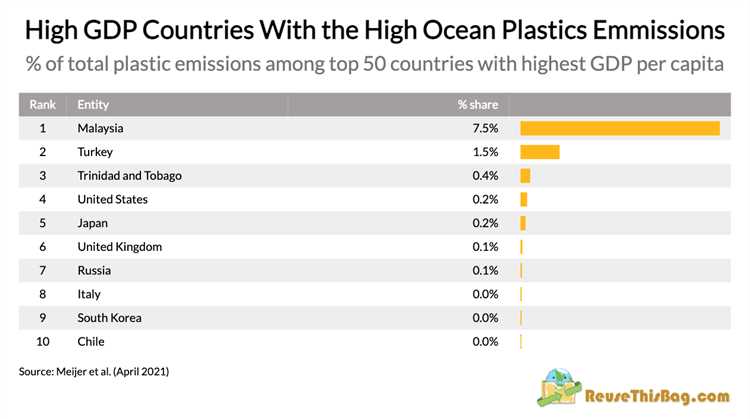
The world is currently facing a severe plastic crisis, with plastic pollution reaching alarming levels. Plastic waste is not only damaging to our environment but also poses a significant threat to marine life, ecosystems, and human health. While it is a global issue, some countries bear more responsibility than others when it comes to plastic pollution.
Leading Contributors to Plastic Pollution
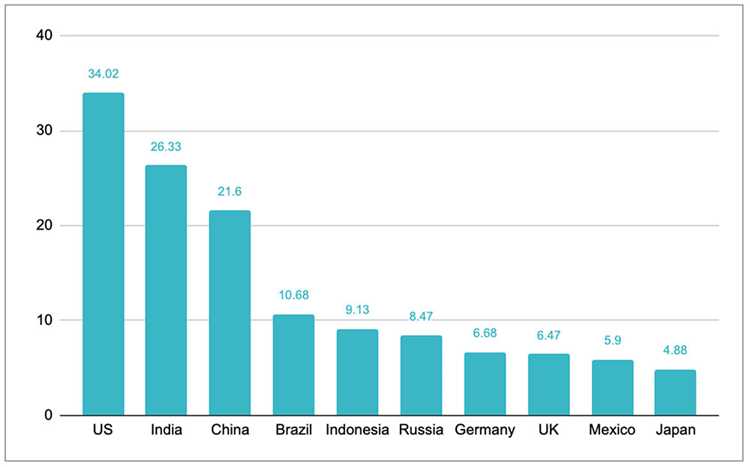
Several countries are notorious for their alarming contribution to the plastic crisis. These countries include:
- China: China has been the largest plastic polluter for many years, accounting for a significant portion of the world’s plastic waste. Its rapid industrialization and population growth have led to an increase in plastic consumption and waste generation.
- United States: As one of the most developed economies, the United States also plays a major role in the global plastic crisis. The country’s high consumption patterns and limited recycling infrastructure contribute to its status as one of the top plastic polluters.
- India: India’s population size and rapid economic growth have resulted in a surge in plastic consumption. Inadequate waste management, lack of awareness, and limited recycling facilities add to the country’s plastic pollution problem.
- Indonesia: With its extensive coastline and heavy reliance on plastic packaging, Indonesia is a significant contributor to marine plastic pollution. Inadequate waste management and a lack of proper recycling infrastructure exacerbate the issue.
Addressing the Plastic Crisis
Addressing the global plastic crisis requires collective efforts from governments, industries, and individuals. It is crucial for countries to implement effective waste management strategies, promote recycling initiatives, and encourage the use of sustainable alternatives to single-use plastics.
International cooperation and awareness campaigns are also essential in combating plastic pollution. By raising awareness about the harmful effects of plastic on the environment and encouraging responsible plastic consumption, we can collectively work towards reducing plastic waste and protecting our planet for future generations.
The responsibility lies not only with the countries mentioned above but also with every nation to take concrete actions and enforce policies that aim to reduce plastic pollution. Together, we can make a difference and tackle the global plastic crisis head-on.
Plastic Pollution Rankings: Top Offenders Worldwide
Plastic pollution is a global problem that affects every corner of the Earth. While many countries are working towards implementing sustainable solutions, some nations are major contributors to the crisis. Here are the top plastic polluters worldwide:
1. China
China has been the largest producer and consumer of plastic for many years. The country’s rapid industrialization and booming economy have led to a high demand for plastic products, resulting in significant plastic pollution.
2. United States
The United States is one of the world’s largest producers and consumers of plastic. Its single-use culture and inefficient waste management systems contribute to its high plastic pollution rankings.
3. India
India’s population of over 1.3 billion people and its growing economy have led to increased plastic consumption. With limited waste management infrastructure in place, India is struggling to address its plastic pollution problem.
Other notable countries that rank high in plastic pollution include Indonesia, Brazil, and Russia. These nations face similar challenges in terms of population, consumption patterns, and waste management.
Addressing plastic pollution requires a collective effort from governments, industries, and individuals worldwide. It is essential to reduce single-use plastic consumption, invest in sustainable alternatives, and improve waste management infrastructure to tackle this global crisis.
Asia’s Troubling Plastic Consumption and Disposal
When it comes to plastic consumption and disposal, Asia is facing a major crisis. The region is home to some of the largest plastic producers and consumers in the world, making it a significant contributor to the global plastic waste problem.
One reason for Asia’s troubling plastic consumption is its booming population. With over 4.6 billion people, the region accounts for more than half of the world’s population. This means a higher demand for goods and packaging, leading to increased plastic production.
Another factor contributing to the problem is Asia’s “throwaway culture.” Single-use plastic products are commonly used and discarded, without a proper recycling infrastructure in place. Plastic bags, bottles, and packaging materials are often thrown away after just one use, ending up in landfills or polluting waterways.
Lack of awareness and education about plastic pollution is also a significant issue in Asia. Many people are not aware of the impact of their plastic consumption on the environment and do not have access to proper waste management facilities.
Unfortunately, the disposal of plastic waste in Asia is largely inefficient. Recycling rates are low, and waste management systems are often inadequate. As a result, a significant amount of plastic waste ends up in the ocean, causing harm to marine life and ecosystems.
To address this troubling issue, governments and individuals in Asia need to take action. This includes implementing stricter regulations on plastic production and consumption, investing in recycling infrastructure, promoting sustainable alternatives to single-use plastics, and increasing public awareness about the consequences of plastic pollution.
It is crucial for Asia to tackle its plastic consumption and disposal problem to mitigate the environmental and health impacts it poses. By working together, the region can make a significant positive impact in reducing global plastic pollution.
The Role of North America in the Plastic Pollution Epidemic
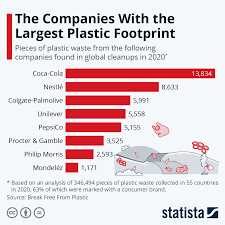
Plastic pollution is a global issue that affects every corner of the planet. When it comes to identifying the biggest plastic polluters, North America definitely plays a significant role. This region comprises three countries: the United States, Canada, and Mexico, all of which contribute to the plastic pollution problem in their own way.
The United States
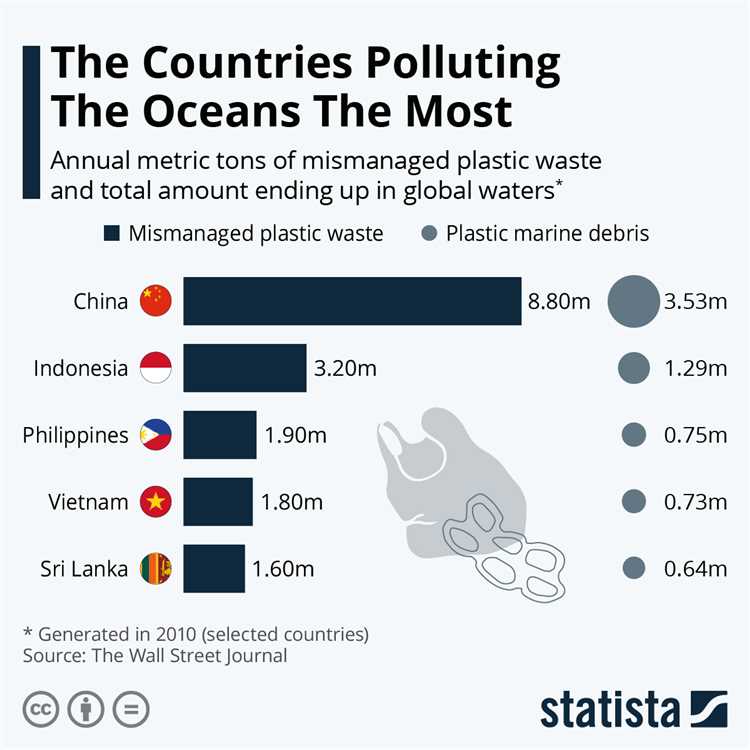
As one of the world’s largest consumers and producers of plastic, the United States plays a substantial role in the plastic pollution epidemic. The country generates a significant amount of plastic waste, with a portion of it ending up in landfills and waterways. The use of single-use plastics like bags, bottles, and straws is especially prevalent, contributing to the overall pollution levels.
In recent years, the United States has taken steps to address the plastic pollution problem. Several states and cities have implemented bans or restrictions on single-use plastics, promoting the use of reusable alternatives. However, more still needs to be done to reduce plastic consumption and improve waste management practices.
Canada
Canada is not exempt from the plastic pollution epidemic either. The country generates a significant amount of plastic waste, much of which is exported to other countries for recycling. However, some of this plastic ends up improperly managed and contributes to pollution in both local and international waters.
In response to the plastic pollution crisis, Canada has been taking measures to tackle the issue. The federal government has committed to banning harmful single-use plastics, such as straws, bags, and cutlery, by 2021. Various provinces and cities have also implemented their own regulations and initiatives to reduce plastic waste and promote recycling.
Mexico
Mexico is another major contributor to the plastic pollution problem in North America. The country produces a significant amount of plastic waste, and its inadequate waste management infrastructure leads to a substantial portion of this waste entering the environment. Coastal regions, in particular, suffer from plastic pollution, with beaches and marine habitats being heavily impacted.
To address the issue, Mexico has been taking steps to reduce plastic pollution. The government has implemented bans on single-use plastics in some areas and is working towards improving waste management practices. Additionally, various grassroots initiatives and campaigns aim to raise awareness about the detrimental effects of plastic pollution.
In conclusion, North America, with its three countries, plays a considerable role in the global plastic pollution epidemic. Each country – the United States, Canada, and Mexico – contributes to the problem in its own way. While efforts are being made to tackle plastic pollution, a collective and sustained approach is necessary to address this pressing environmental issue.
Uncovering Europe’s Plastic Waste Problem
Plastic waste is a global issue, and Europe is no exception. With its high population density and advanced industrial infrastructure, Europe is one of the major contributors to the world’s plastic pollution. Each year, millions of tons of plastic waste end up in rivers, lakes, and oceans, causing severe damage to marine life and ecosystems.
According to recent studies, some European countries stand out as the biggest plastic polluters in the region. These countries include Germany, the United Kingdom, and Italy. They generate significant amounts of plastic waste, mostly from packaging materials and single-use plastics.
In Germany, for example, the excessive use of plastics, particularly in the packaging industry, has led to large amounts of plastic waste entering the environment. Despite the country’s well-established recycling system, a significant portion of plastic waste is still not properly collected and ends up in landfills or as litter. This not only pollutes the environment but also contributes to the emission of greenhouse gases during the degradation process.
The United Kingdom is another major contributor to Europe’s plastic waste problem. With its large population and consumption habits, the country produces a substantial amount of plastic waste every year. While efforts have been made to promote recycling and reduce plastic consumption, more needs to be done to tackle the persistent issue of plastic pollution.
Italy, with its extensive coastline along the Mediterranean Sea, faces unique challenges in managing plastic waste. The influx of tourists during the summer months significantly increases the consumption of single-use plastic items like bottles, straws, and food containers. Despite various initiatives aimed at reducing plastic waste, the country still struggles to effectively address the problem.
These are just a few examples of the European countries grappling with the plastic waste issue. It is crucial for all nations to come together and implement effective strategies to reduce plastic consumption, improve waste management systems, and develop sustainable alternatives to single-use plastics. Only through collective efforts can Europe, and the world as a whole, make a significant impact in combatting plastic pollution.
Africa’s Growing Concern: Plastic Pollution on the Rise
Africa is facing a growing concern over the rise of plastic pollution. Despite being one of the continents least responsible for the global plastic waste crisis, Africa is still heavily impacted by this environmental issue. The lack of effective waste management systems and the increasing consumption of single-use plastics have contributed to the escalating pollution problem in many African countries.
Plastic pollution poses a significant threat to Africa’s wildlife and ecosystems. Marine animals often mistake plastic waste for food, leading to entanglement and ingestion, which can be fatal. This not only disrupts the fragile balance of the marine ecosystem but also affects the livelihoods of fishing communities that rely on these resources.
In addition to marine pollution, plastic waste also clogs rivers and drainage systems, causing flooding and waterborne diseases. Many African countries suffer from limited access to clean water, and the presence of plastic waste exacerbates this issue. Furthermore, burning plastic waste releases toxic chemicals into the air, contributing to air pollution and negatively impacting public health.
Efforts are being made to address plastic pollution in Africa. Some countries have implemented plastic bans or levies on single-use plastics, while others are investing in recycling infrastructure. However, enforcement and education remain key challenges in effectively tackling the issue. Collaborative efforts between governments, non-profit organizations, and local communities are crucial to raising awareness, promoting sustainable alternatives, and improving waste management practices.
It is essential for Africa and the global community to come together to combat plastic pollution. By adopting sustainable practices and reducing plastic consumption, the continent can mitigate the negative impact on its environment and safeguard the health and well-being of its people and wildlife.
Q&A:
Which country is the biggest plastic polluter?
The country that is currently the biggest plastic polluter is China.
How much plastic pollution does China produce?
China produces approximately 28% of the world’s plastic pollution.
Is plastic pollution a global problem?
Yes, plastic pollution is a global problem that affects every country.
What are the consequences of plastic pollution?
The consequences of plastic pollution include harm to marine life, pollution of water sources, and health risks for humans.
What measures are being taken to reduce plastic pollution?
Many countries and organizations are implementing measures such as plastic bans, recycling programs, and promoting alternative materials to reduce plastic pollution.
Which country is the biggest plastic polluter?
The biggest plastic polluter is China. They produce the largest amount of plastic waste globally.